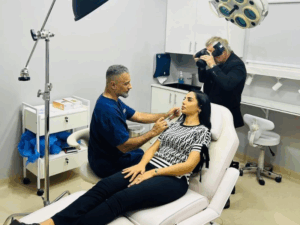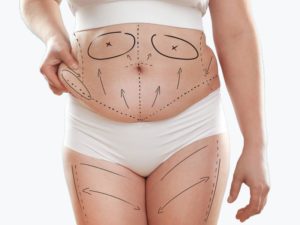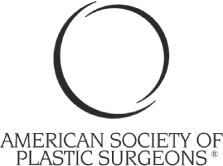BREAST LIFT
What are Tubular Breasts? Types of Symptoms, Causes, and Treatment

Tubular Breast Correction: Your Journey to Balanced Beauty!
Tubular breasts, often referred to as “tuberous breasts,” are a unique breast shape that develops during puberty due to structural differences in breast tissue. This condition can impact not only the physical appearance of the breasts but also an individual’s self-esteem and confidence. Those with tubular breasts may notice their breasts appear narrow, widely spaced, or lack fullness at the base. These changes can lead to a sense of self-consciousness, particularly during adulthood.
Dr Faisal Salim, a renowned expert in breast aesthetics, offers specialised tubular breast augmentation treatments to reshape and enhance the appearance of tubular breasts, restoring confidence and natural beauty.
What are Tubular Breasts?
Tuberous breasts, sometimes called tubular breasts, are characterized by a tube-like shape rather than a rounded one, with a broader space between them and often larger areolas. This condition is rarely discussed openly, but it’s important to know there is no reason for embarrassment, and it poses no risks to overall health.
This congenital condition affects breast tissue development during puberty, resulting in breasts that may appear droopy, small, or asymmetrical. Known by several terms, including constricted breasts and tuberous breast deformity, it’s relatively uncommon, with variations in severity from mild to pronounced.
Most people notice this difference during puberty, though milder cases might not be apparent until later in life. Many individuals are unaware that it can be treated, and deciding on treatment is often based on personal preferences regarding appearance.
What are the possible causes of tubular breasts?
The exact tubular breast deformity causes remain unclear, but some experts suggest that the condition may stem from developmental changes occurring in utero.
Tubular breasts typically become noticeable during puberty, as the breasts begin to take on their adult shape. In most cases, there is insufficient breast tissue development during this time. Additionally, the ring of tissue connecting the areola to the rest of the breast often forms abnormally, resulting in the distinct “droopy” appearance associated with this condition.
What are the symptoms of Tubular Breasts?
While some variation between breasts is entirely normal, tuberous breasts tend to exhibit more pronounced differences. These variations go beyond typical size disparities, making the condition more noticeable.
What do tuberous breasts look like?
The experience of having tuberous breasts can vary widely from person to person. Common signs and characteristics include:
- Cylindrical-shaped breast tissue
- A sagging appearance due to a higher-than-normal lower breastfold
- Noticeable spacing between the breasts
- Uneven or asymmetrical breast sizes
- Larger-than-average areolas
- In some cases, only one breast may be affected
- Minimal fullness in the breasts
- Nipples that appear more prominent or protruding
Types or Grades of Tuberous Breasts
Tuberous breasts are generally categorized into three grades:
- Grade 1: Characterized by breast asymmetry with a visible lack of medial breast tissue. The breasts often appear small, with a shortened lower pole.
- Grade 2: Features include a downward-facing areola, a tight breast fold, and a significant deficiency in the lower portion of the breasts.
- Grade 3: The entire breast is affected, displaying a distinct tubular shape that is easily noticeable.
Tuberous Breast Correction: What does the treatment procedure involve?
Our surgeon may undertake any of the following best-suited tubular breast reconstruction surgeries to treat the condition:
Tubular Breast Augmentation
Breast implants are a highly effective option for correcting tubular breasts, particularly in cases with underdeveloped breast tissue. Implants help enhance breast volume and shape, resulting in a more balanced and natural appearance.
To achieve optimal results, the constricted base of the breast must first be released, allowing the breast to expand normally. This tubular breast augmentation may also involve reshaping the breast tissue and refining the inframammary fold. Additionally, breast augmentation can address asymmetry, creating a more harmonious overall aesthetic.
Breast Uplift for Tubular Breasts
For patients experiencing significant drooping (ptosis) due to tubular breasts, a breast uplift or mastopexy is a suitable tubular breast surgery. This procedure repositions the breast tissue higher on the chest wall while eliminating excess skin and tightening the surrounding tissue. The result is better support and a more aesthetically pleasing shape. The areolas can also be resized or reshaped during the uplift, addressing the common concerns of enlarged or puffy areolas often associated with tubular breasts.
Breast Augmentation with Uplift for Tubular Breasts
In some cases, combining breast augmentation with an uplift (augmentation mastopexy) provides the best outcomes.
This dual procedure addresses multiple concerns, enhancing fullness, symmetry, and breast positioning. The surgeon will evaluate the patient’s anatomy and aesthetic goals to determine the ideal implant size, shape, placement, and the degree of uplift needed. This comprehensive approach ensures a balanced and natural-looking result.
Asymmetry Correction for Tubular Breasts
Asymmetry is a common issue in tubular breasts, where one breast may be noticeably smaller, larger, or more drooped than the other. Correction typically requires a blend of procedures tailored to individualistic needs.
For example, one breast may need augmentation while the other may need a reduction or a more extensive uplift. Furthermore, reshaping the nipples and areolas fetches you a cohesive and symmetrical appearance. A skilled plastic surgeon is essential for achieving optimal results.
Tubular Breast Correction Using Fat Transfer
Fat transfer is an innovative procedure where the patient’s own body fat is used to enhance the shape and volume of tubular breasts.
This process entails:
- Harvesting fat from areas like the abdomen or thighs through liposuction.
- Processing the fat to remove impurities.
- Injecting purified fat into the breasts to improve their shape and fullness.
Tubular Breast Correction Using Implants
Implants remain the most common treatment for tubular breast correction.
They effectively:
- Increase breast size and fullness.
- Improve breast shape.
- Enhance breast symmetry.
Benefits of Tubular Breast Reconstruction
Surgical correction of tubular breasts offers numerous benefits, including:
- Improved appearance: A more natural and aesthetically pleasing breast shape.
- Boosted self-confidence: Many patients report feeling more confident post-surgery.
- Enhanced self-esteem: A positive change in body image and self-perception.
- Minimal scarring: Modern techniques often avoid visible scars on the breasts.
These procedures are transformative, offering both physical and emotional benefits to those affected by tubular breasts.
Explore more about tubular breast treatment with the expert in the field – Dr Faisal Salim
For more information and personalized advice on tubular breast treatment, consult with Dr Faisal Salim.
As a leading expert in the field, before getting started with the process, he assesses your specific needs and recommends the most suitable treatment plan. By addressing the underlying concerns and restoring a more balanced breast shape, Dr Faisal can help you regain your confidence and embrace your natural beauty.
Get in touch today!
FAQs
While there may be some discomfort after surgery, pain is typically well-managed with prescribed medications and subsides within a few days.
Recovery varies by procedure, but generally takes about 4–6 weeks for most patients to resume normal activities fully.
Modern surgical techniques minimize scarring, and any scars typically fade over time with proper care.
Fat transfer can be a good option for mild cases. It involves using your body’s natural fat to add volume and improve shape.
In some cases, tubular breasts may impact milk production, but this depends on the severity of the condition.
Choose a board-certified plastic surgeon with experience in tubular breast correction, like Dr Faisal Salim, who can provide tailored solutions.
Patient Testimonials








